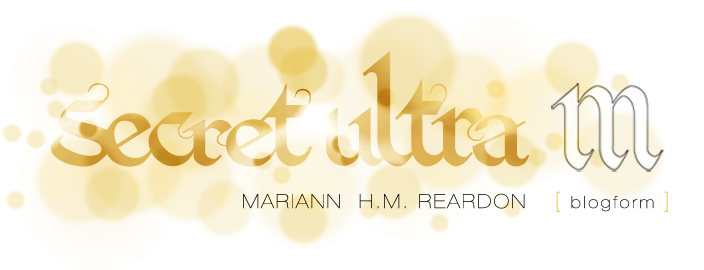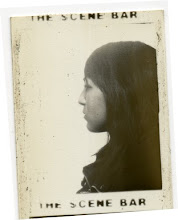Also, I'd like to thank thee Melissa M. Martinez for her grammarian expertise.
Cheers!
Losmosis: Making Art in L.A.
Some of us are native, but many of us have made the witting journey to be here. We were drawn to the fabled, golden frontier that is California. Moreover, we have settled in the glimmering metropolis of swimming pools and movie stars, our beloved Los Angeles.
But it’s not just that L.A. seems to be a magical Eden formed from the dusts on the Santa Anas and the dew of the Pacific—rather, it has a substantiality made of the many disparate cultural sediments that have silted here. If you wanted to gloss it over, you could say we’re just another melting pot. But we’re a dynamic, strange, relatively young and unpredictable one. Our unlimited sunshine, space, and resources (or so the story goes) create fertile ground for creative minds. It is no coincidence that L.A. is the headquarters of the entertainment industry. The same stuff that makes gold records and silver screens can be found in the workings of L.A.-based fine artists. We’re only limited by our imaginations, and anything we can think of is fair game for subject matter and media—why “not a cornfield?” Or, a movie-screen sized aperture in your ceiling?

While the New York art scene re-institutionalizes itself every few years, the L.A. scene grows slowly and steadily, and as erratically as a Joshua tree. Every minute particle that comprises L.A.’s cultural landscape begins to do an osmotic dance with our creative practices, and a great deal of evidence of this phenomenon is on display here in the GLAMFA exhibition. There are the pieces that pictorially represent vignettes of the L.A. landscape, such as Dana Maiden’s fruit cart, Kate Wall’s depiction of downtown, and Alison Walker’s sideways pool slide. There are works that riff off of Hollywood’s industries, as in the prop and façade-like sculptures of Isaac Resnikoff and Seth Pringle, and Joanna Mitchell’s documentation of women in the music recording industry. However, there are many more L.A.-tinged works in this show that don’t reveal so many stripes on the surface.
In one of GLAMFA’s most ephemeral pieces, I’m With Stupid, Jared Nielsen performs as a sign twirler. Instead of the usual “2 Pizzas for $8.99!” or “LOFTS NOW AVAILABLE,” the text on Nielsen’s arrow-shaped sign doesn’t promote any wares. Nielsen does, however, give us his guided glimpse at this relatively new advertising tactic that tries to penetrate the windshield of L.A.’s car culture. As we all know, a significant part of L.A. culture is the reverence and, arguably, the necessity of the personal vehicle. For years, advertisers have been trying to leak into these spaces via billboards and radio spots, but sign-twirling is perhaps the most unexpected tactic. In my own passing of these sign twirlers, I most often find myself thinking more about the twirler than the twirled. The experience is not unlike the uncomfortable encounters with the city’s record-number of homeless, often posting themselves at busy intersections and at the end of freeway off-ramps. These occurrences reveal that what we think of as our own mobile, private spaces neither screen us from the outside, nor lend us a neutral, secure environment within. This shift in perspective is propagated by Nielsen’s verbal and literal shifting of “Stupid.”
At the perimeter of the car-culture spectrum, Deanna Erdmann’s 24-minute video, Blow Sand, is an entrancing, abstracted look at the SoCal pastime of riding motor bikes, quads, and buggies over the heights and stretches of our surrounding desert dunes. Trying to find pleasurable ways to kill time is almost a pastime in itself, and in this instance, the peculiarity of circling over empty swatches of land on a mechanical steed is filtered from its hormone-thick atmosphere for a closer inspection. By the simple swapping out of sunlight for headlights, Erdmann creates an almost meditative image in which you find yourself presented with a microcosm of time and space—simultaneously reflecting all responsibilities, decisions, and consequences of having such resources.
Many other GLAMFA artists have tapped into the topic of resource, which is a subject inseparable from the greater L.A. region. In studies of a more contemporary raw material, Tim Schwartz and Gideon Barnett both used the Internet to create their exhibited works. The World Wide Web, greatly shored by the corporations of our Northern California neighbors in Silicon Valley, is clearly one of the new media frontiers in the story of art. In The Origin of the World, Barnett takes the results of a Google keyword image search, an apparent fad-diet in the realm of conceptual fodder, and re-archives the findings in the form of a three-volume, hard-bound reference book collection. As an undercurrent, however, Origin also peeks into the world of L.A.’s Silicone Valley, the American home of the pornography industry. Returning contemporary photographic parodies of Gustave Corbet’s erotic L’origine du Monde, Barnett’s image search reflects t
 he porn industry’s capitalization of all things kitsch, and of the Internet itself. Citing an only slightly less tawdry field, Tim Schwartz’s sculpture outlines the news radar of Hollywood in his piece, Paris. Using an Ethernet feed, a needle-meter pulses between net-wide mentions of both Paris, France, and Paris Hilton. Where the small-town six o’clock news may use the occasional human interest story to fill air-time, L.A.’s news stations use celebrity gossip stories almost daily in their broadcasts. Schwartz’s meter cleverly points out the way Hollywood gauges and reports the health of its image—both the glamorous and the pitiful being of equal import.
he porn industry’s capitalization of all things kitsch, and of the Internet itself. Citing an only slightly less tawdry field, Tim Schwartz’s sculpture outlines the news radar of Hollywood in his piece, Paris. Using an Ethernet feed, a needle-meter pulses between net-wide mentions of both Paris, France, and Paris Hilton. Where the small-town six o’clock news may use the occasional human interest story to fill air-time, L.A.’s news stations use celebrity gossip stories almost daily in their broadcasts. Schwartz’s meter cleverly points out the way Hollywood gauges and reports the health of its image—both the glamorous and the pitiful being of equal import.Image is another ubiquitous L.A. theme. Everyone who has transplanted themselves to Los Angeles has an accompanying story revealing the hopes and expectations of what the Golden State would hold for them, as seen in Cathy De La Cruz’s narrative video, My First Time in California, playing in the GLAMFA screening room. Typical stereotypes of L.A. include ideal landscape, weather, open space, and, overwhelmingly, lifestyle. Even the images representing L.A.’s population are treated and modified by the prevailing attitudes toward abundance and perfection. Such attitudes are illuminated in William Fen’s photographic depiction of a Hollywood Hills-esque cocktail party, and in Leigh Cole’s Boys Boys Boys marquee. In a pointedly strange mish-mash of image and culture, the video installation Buoyant, by Akosua Adoma Owusu, features a sculptural stacking of life preservers, which are also featured in the accompanying video work. The circular floats, completely wrapped in alternating blocks of blonde and brunette hair extensions, give a surreal, tactile body to the installation. Even though the total work isn’t about poolside bottled blondes, these echoes of Californian stereotypes lend an eerie counterbalance to Owusu’s central themes.
As an artist myself, I’ve recently been feeling the gravity of the realm of Greater Los Angeles on my work, and even my everyday life. It’s been exciting to be on the curatorial team of this year’s GLAMFA, and also to notice the permeating effects of L.A. in the work of these remarkable artists, whom I am thrilled to call my peers. It’s not quite glamorous, and we’re certainly overshadowed by many things here, but being an artist in Los Angeles is invigorating. The spirit our work imbibes from this place gives it a substance you may not be able to put your finger on, but one you’ll definitely notice.
Thanks to all who have supported GLAMFA, both this year and in the past—I hope you enjoy the show.
image information: Left - The Wilderness 3 (Cactus), by Isaac Resnikoff. Right - detail from Paris, by Tim Schwartz.


No comments:
Post a Comment